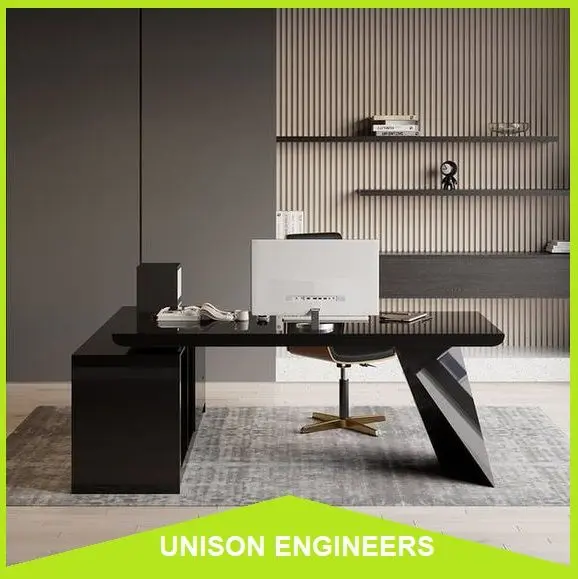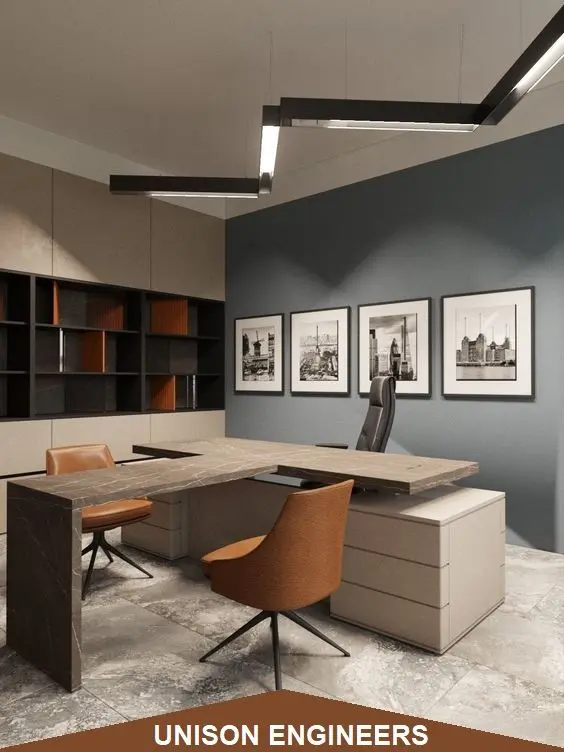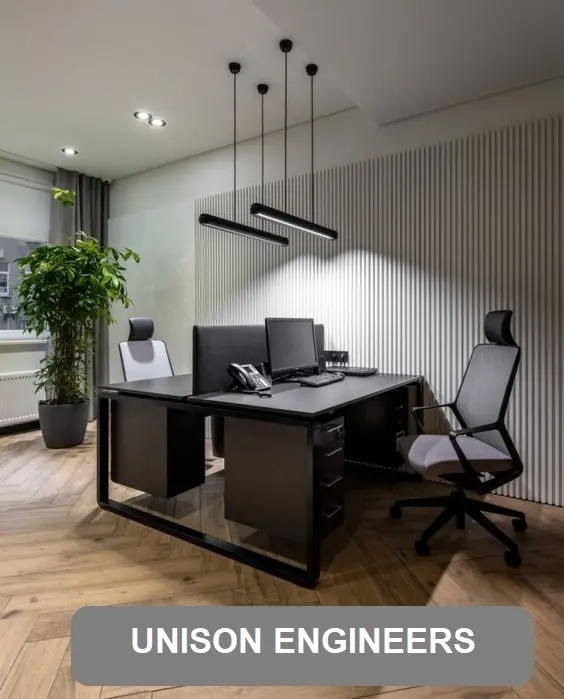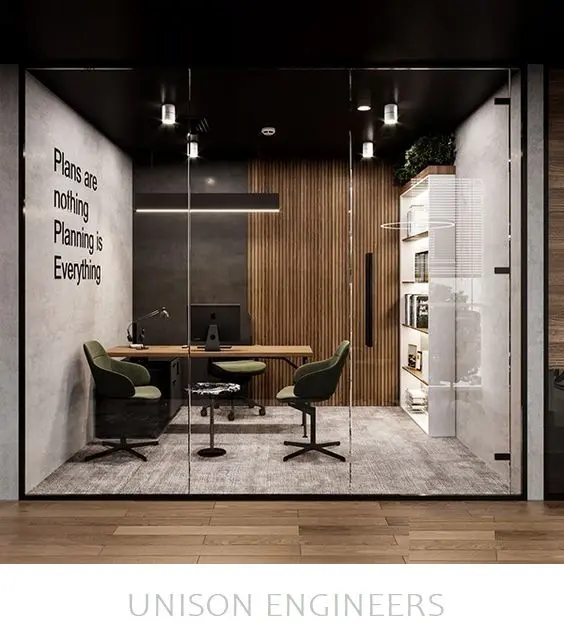📖 Introduction
In the age of digital wallets and online transactions, the need for physical bank branches might seem to be diminishing. However, for many customers — especially those handling significant financial matters, legal documentation, or personal consultations — stepping into a physical bank branch still carries deep symbolic meaning. It’s a space where trust, confidentiality, and professional assurance are expected.
This is where interior design becomes much more than just aesthetics. It plays a crucial role in shaping customer perceptions, ensuring they feel secure, valued, and comfortable. A well-designed bank interior can influence customer loyalty, ease financial anxieties, and make complex financial dealings feel approachable.

🏛️ How Interior Design Builds Trust in Banks
1️⃣ Clear and Open Layouts:
Modern banks are breaking away from the old, intimidating setup of teller counters enclosed behind glass walls. Open-plan layouts with clearly marked zones — such as help desks, teller counters, private consultation rooms, and customer lounges — foster a sense of openness and inclusivity. This design approach eliminates physical and psychological barriers between customers and bank staff, encouraging better interaction and a more human-centered service experience.
For example, HSBC’s new branch formats feature café-style lounges and open consultation pods instead of traditional enclosed rooms, making financial discussions feel more informal yet professional.
2️⃣ Warm, Calming Colors:
The traditional sterile whites and corporate grays of old-school banks are being replaced with warm, inviting color palettes. Shades like soft blue, earthy beige, light wood textures, and mossy greens are now preferred to promote calmness and reduce stress.

Financial transactions often come with anxiety — whether it’s applying for a loan or managing investments. Soothing interiors help ease this tension and create a tranquil atmosphere where clients can focus and feel assured.
3️⃣ Secure but Subtle Design:
While security remains paramount in banking environments, modern designs cleverly integrate safety elements so they don't overpower the customer experience. Bulletproof glass, CCTV systems, emergency exits, and controlled access areas are designed to be discreet yet effective.
The focus is on blending technology and security features into the aesthetic of the space. For instance, digital security screens that activate only when needed, or retractable privacy barriers for confidential transactions, strike a perfect balance between transparency and safety.
4️⃣ Comfortable Waiting Areas:
Gone are the days of stiff chairs and sterile waiting areas. Today’s banks invest in spacious, thoughtfully curated customer lounges complete with plush seating, charging stations, reading materials, refreshment counters, and indoor plants.
Banks like DBS and Standard Chartered have reimagined their waiting spaces to resemble boutique hotel lobbies, reducing customer stress and ensuring their time is valued, whether they’re waiting for an appointment or processing paperwork.

🌿 Embracing Digital and Sustainable Design
As the banking sector embraces digital transformation, interior design is evolving to reflect these changes. Self-service kiosks, digital transaction terminals, virtual queuing systems, and touchscreen help desks are integrated into branches without compromising their warmth and character.
Sustainability is another priority. Banks are increasingly adopting eco-friendly materials, energy-efficient lighting, recycled wood furnishings, and indoor greenery to minimize their environmental footprint. This not only aligns with global sustainability goals but also resonates with environmentally conscious clients who appreciate businesses that take social responsibility seriously.
Natural light optimization, air purification systems, and biophilic design principles are also being introduced to promote wellness among staff and visitors alike, making banks healthier and more enjoyable spaces to be in.
🌍 Reinventing the Community Role of Banks
In addition to transactional functions, modern banks are reclaiming their role as community hubs. Many branches now feature art displays by local artists, book swap corners, small event spaces for financial literacy workshops, and interactive digital walls showcasing community initiatives.
This approach strengthens the bank's presence in the local area, builds goodwill, and positions the brand as a socially responsible, customer-first organization.
📌 Final Thoughts
Today’s banking spaces are about much more than managing money. Through intelligent and empathetic interior design, modern banks are transforming themselves into trustworthy, welcoming, and meaningful community spaces. The right design choices can ease financial anxieties, improve operational efficiency, and foster long-term customer relationships.

As customer expectations continue to evolve, banks that invest in smart, sustainable, and customer-friendly interiors will stand out as not just financial institutions — but as trusted lifestyle partners.